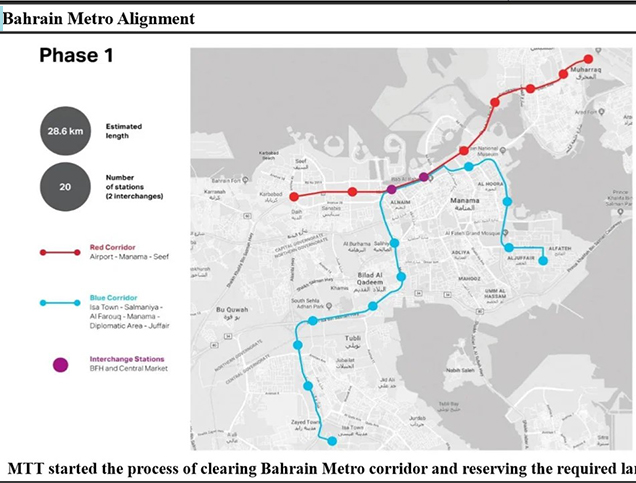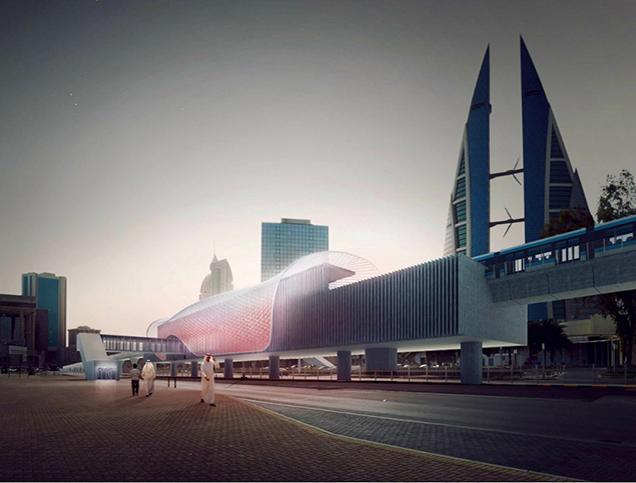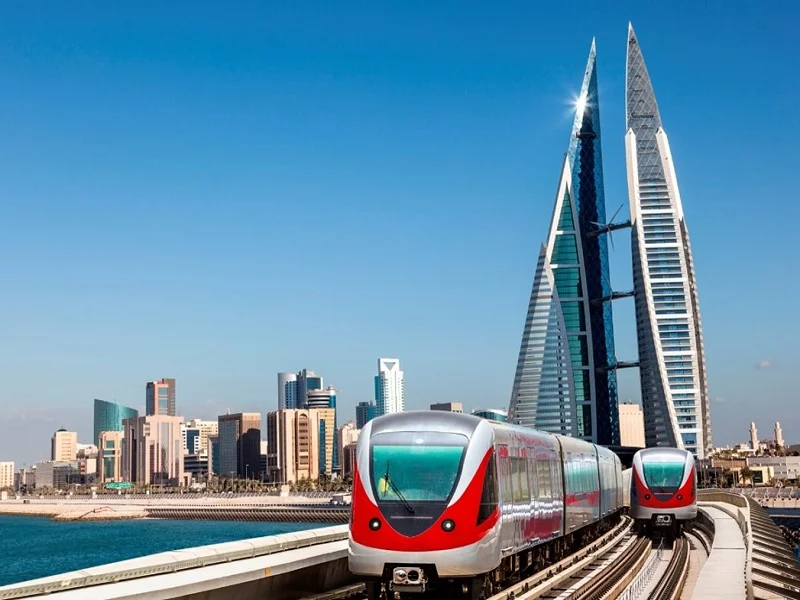
Close

Approach Words: Efficiency, Integrated City, Sustainability
Public Policy Instruments: Financial Mechanism, Physical Intervention, Planning, Regulatory
The Bahrain Metro is a public transportation project1 that is to be the first light rail transit system implemented in the Kingdom of Bahrain2. As part of the Bahrain Economic Vision 2030i 3, the project aims to provide efficient connectivity to key residential, commercial, administrative, and leisure areas across the country4. Additionally, the project seeks to alleviate traffic congestion through a public transit system and preserve the environment by offering an automated, self-driving electric train service5.

Title: Metro map showing the first 20 metro stations in Bahrain.
Source: Click Here

Title: Map showing the lines of the first phase of the Bahrain metro project.
Source: Click Here

Title: 3D rendering of the proposed Bahrain metro project.
Source: Click Here

Title: Picture shows the implemented part of the first phase of Bahrain metro project.
Source: Click Here
The metro is planned to run on 109 kilometers of rail track, with 30 kilometers of it elevated6. It consists of four lines7, red, green, yellow and blue8. The system will incorporate a Grade 4 automation (GoA4) system, which is fully automated and driverless9. The project consists of two phases as follows:
The first phase, which includes the red and blue rail lines, is under implementation10. This phase was approved in 202111 and is planned to span over 29 kilometers in length, comprising 20 stations operating via the two lines, with a projected daily passenger capacity of 43,00012 13. The components of this phase are as follows:
The red and blue lines (R1 and R2) will intersect at the Bab al Bahrain and the al Farooq Junction stations18.
The second phase of the project, which includes the remaining green and yellow lines (R3 and R4), is currently under study19 by the Bahrain Ministry of Transportation and Telecommunication (MTT). These lines will link the King Hamad International Passenger Station in the Ramli area with Sports City and the Bahrain International Exhibition and Convention Centre in the Sakhir area. This phase will span 18 km in length and include five stops20.

Owner/Developer (Public)

Contractor/Implementer
This public transportation system is expected to reduce reliance on automobiles, thereby alleviating traffic congestion21 and enhancing ease and efficiency of commute across the country22. Additionally, it is anticipated to bring about broader socio-economic advantages, including environmental sustainability through the reduction of emissions, promotion of a clean and safe environment with the utilization of electric trains23 24.
The project is initiated by the Bahraini Ministry of Transportation and Telecommunication (MTT)25 . The ministry has specified IDOM, a private consultancy firm providing engineering and architecture services, to work with them on designing phase one including the preparation of the feasibility study26. The project will be implemented by Delhi Metro Rail Corporation (DMRC)27 as the principal contractor responsible for project implementation where the overall estimated project cost is between $2 billion28.
It should be noted that the Project is tendered as an integrated Public Private Partnership (PPP), as the chosen private partner will execute the project based on the DBFOMT model (Design, Build, Finance, Operate, Maintain, Transfer), with a contract duration of approximately 35 years29.
Project Link
https://www.mtt.gov.bh/content/bahrain-metro
Endnotes
References